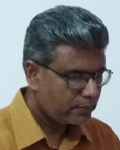Till Sun and Moon Shines [Part 4]
By Eng. Chandana JayawardanaEmpirical Approaches to Sustainability
In 1987, the Brundtland Commission published the first volume of ‘Our Common Future’, the organization’s main report. It is credited with crafting the most prevalent definition of sustainability, ‘development that meets the needs of the present without compromising the ability of future generations to meet their needs’. Today, it is this concise definition used in many related forums. However, as discussed in the last issue, ‘sustainability’ is a multifaceted concept seen by different parties in different perspectives.
If sustainability is to be transcended from its conceptual framework and to be incorporated into real activities, it must have a reasonably simple and consistence meaning as well as practical methodology to materialize. There are several approaches developed to achieve this goal. One approach is to evaluate the rate of resource use in a process. Graedel and Klee promoted this approach (Graedel and Klee, 2002) and they proposed four basic steps to begin with: (i) establish the available supply of the chosen resource, (ii) allocate the annual permissible supply according to a reasonable formula or market process, (iii) establish the ‘recaptureable’ resource base, and (iv) derive the sustainable limiting rate of use and compare to the current rate of use.

Thomas E. Graedel
Another approach to assess the sustainability was devised based on the energy. Accordingly, sustainability could be based on the concept of energy debt incurred against energy stocks stored earlier. For example, wind energy could be replaced instantly (if wind continuous to blow). Water discharged from a reservoir to generate electricity may be replaced in next hydrologic year. Energy debt due from using a tree as an energy source may be repaid within one human generation while burned oil or coal will remain as a debt for a considerably long time. In this sense, wind is sustainable energy source compared with water, followed by timber and then by fossil fuel.
Exergy, which is defined as ‘useful energy’ that can be applied to a process to perform work, was also applied in industrial ecology as a measure of sustainability (Ayres, 1978). This approach recognizes that, in every process energy is transformed and part of it is degraded with respect to its ability to perform useful work.

R.U. Ayres
As Earth’s ecosystem is maintained by the flow of energy, it was argued that rate of entropy change should also be combined with the energy flux in order to provide a reasonable measure of sustainability. In general, changes of entropy resulting from transformation, concentration or dilution of individual constituents can be calculated using a common thermodynamic approach. These changes can be positive indicating an entropy increase (e.g., as a result of dilution) or negative (e.g., resulting from segregation of a mixed stream into its components). From a sustainability viewpoint, the processes that increase entropy are considered as less sustainable.
According to Hermanowicz, although sustainable development is a growing concern expressed by many businesses organizations and individuals, no workable quantifiable definition of sustainability is available for evaluation of specific projects or operations (Hermanowicz, 2005). He attempted to set a framework for such a definition in terms of the first and second law of thermodynamics. Specifically, the proposed description of sustainability relates the fundamental processes of chemical, physical or biological transformation, and mass transport to energy and entropy changes. Unlike previous applications of these concepts, the proposed definition is focused on the smallest unit operations and processes while allowing for aggregation into larger systems.
References
Ayres, R.U., 1978, Resources, environment and economics: Applications of the materials/ energy balance principle, New York: John Wiley and Sons.
Graedel, T.E., Klee, R.J., 2002, ‘Getting serious about sustainability’, Environmental Science and Technology, 36(4):523-9
Hermanowicz, S.W., 2005, Entropy and Energy: Toward a Definition of Physical Sustainability.
 Eng. Chandana Jayawardana has earned his first degree in Electrical Engineering from University of Moratuwa and then, post graduate qualifications in Industrial Engineering and Buddhist Studies. He is currently working as Design Manager, Balfour Beatty Ceylon (Pvt) Ltd, Katunayake.
Eng. Chandana Jayawardana has earned his first degree in Electrical Engineering from University of Moratuwa and then, post graduate qualifications in Industrial Engineering and Buddhist Studies. He is currently working as Design Manager, Balfour Beatty Ceylon (Pvt) Ltd, Katunayake.
